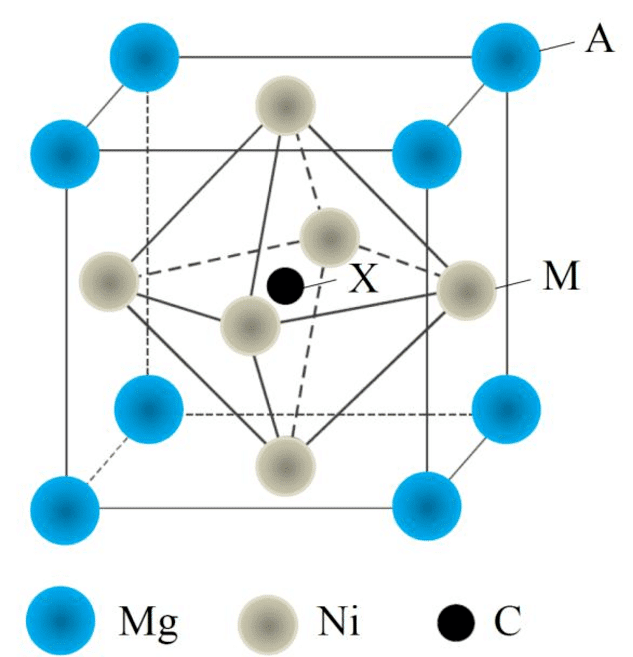 | ||
Similar Diamond anvil cell, Spinel, Perovskite (structure) | ||
The antiperovskite crystal structure is similar to the perovskite structure that is common in nature. The key difference is that the positions of the cation and anion constituents are reversed in the unit cell structure. As opposed to perovskite, antiperovskite consists of two anions coordinated with one type of cation that bonds with both. Antiperovskite compounds are an important class of materials since synthesized antiperovskites demonstrate interesting and useful physical properties.
Contents
Structure
The crystal structure of antiperovskite parallels the perovskite structure, with the exception of switching anion and cation positions. The typical perovskite structure is ABX3, where A is a monovalent cation, and B is a divalent metallic cation and X is a monovalent anion.
For antiperovskite, the ABX3 formula is reversed. The X position is an electropositive cation (such as an alkali metal), while the A is a monovalent anion and the B is a divalent anion. In the idealized cubic cell, the A anion is at the center of the cube, the B anion at the octahedral corners, and the X cation is at the faces of the cube. Thus the A anion has a coordination number of 12, while the B anion sits in the center of an octahedron with a coordination number of 6.
While the crystal structure can be idealized as a cube, antiperovskite compounds are known to have orthorhombic and tetragonal phases.
Whether a compound will form an antiperovskite structure depends not only on chemical formula, but also the relative sizes of ionic radii of the constituents. This constraint is expressed as allowed values of the Goldschmidt tolerance factor, which is determined by the radii, ra, rb and rx, of the A, B, and X ions.
For the antiperovskite structure to be structurally stable, the tolerance factor must be between .71 and 1. If between .71 and .9, the crystal will be orthorhombic or tetragonal. If between .9 and 1, it will be cubic. By mixing the B anions with another element of the same valence but different size, the tolerance factor can be altered. Different combinations of elements dictates which phase it will be in and the thermodynamic stability of the crystal.
Occurrence
Naturally occurring antiperovskites include sulphohalite, galeite, schairerite, kogarkoite, nacaphite, arctite, polyphite, and hatrurite.
Demonstrated superconductivity in compounds such as CuNNi3 and ZnNNi3.Synthesized Antiperovskites
Man made antiperovskites exhibit interesting properties. Because of the lattice structure, physical properties of antiperovskite compounds can be manipulated by stoichiometry, element substitution, and changing the conditions during synthesis.
Lithium Rich Antiperovskites (LiRAP)
Recently synthesized antiperovskites with chemical formula Li3OBr or Li3OCl have demonstrated superionic conductivity for Lithium ion. These LiRAPs are being investigated for use in solid state batteries and fuel cells. In addition, other alkali rich antiperovskites such as Na3OCl are also being investigated for superionic conductivity.
Metallic Antiperovskite
Discovered in 1930, these crystals have the formula M3AB where M represents a magnetic element, Mn, Ni, or Fe; A represents a transition or main group element, Ga, Cu, Sn, and Zn; and B represents N, C, or B. These materials demonstrated superconductivity, giant magnetoresistance, and other unusual properties.
Antiperovskite manganese nitrides
Antiperovskite manganese nitrides have demonstrated zero thermal expansion.
